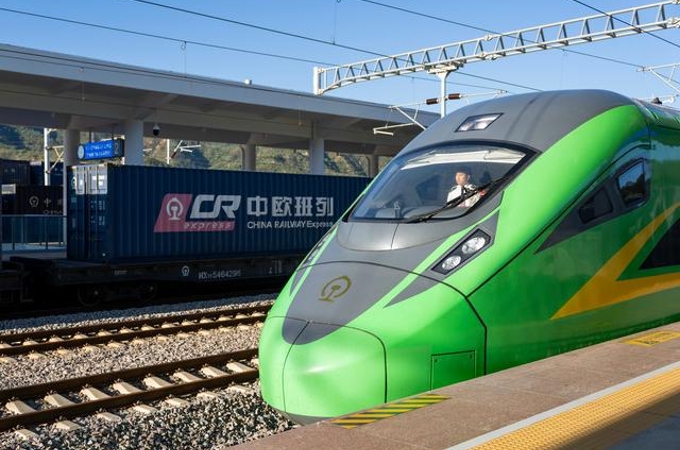Philippines' inflation rate eases to 6.1 pct in May
Source: Xinhua | 2023-06-06 | Editor:Lexi
Year-on-year inflation in the Philippines slowed further to 6.1 percent in May from 6.6 percent in April due to lower transport and food costs, the Philippine Statistics Authority (PSA) said on Tuesday.
"This is the fourth consecutive month of deceleration in the headline inflation in the country," PSA head Dennis Mapa told a news conference.
The PSA data showed inflation rate in May 2022 was still lower at 5.4 percent. The average inflation rate from January to May this year stood at 7.5 percent.
Mapa said the main drivers that pulled down the inflation rate in May were transport, which declined to -0.5 percent from 2.6 percent in April; food and non-alcoholic beverages, which dropped to 7.4 percent from 7.9 percent in April; and restaurants and accommodation services, which slowed to 8.3 percent from 8.6 percent in the previous month.
Meanwhile, Mapa said core inflation, excluding selected food and energy items in the headline inflation, slowed to 7.7 percent in May from 7.9 percent in April.
"We are confident that we can achieve the government's inflation target this year as we work closely with concerned government agencies in monitoring the primary drivers of inflation," National Economic and Development Authority (NEDA) Secretary Arsenio Balisacan said.
Aside from slower food and transportation inflation that contributed to the steady slowdown in May, Balisacan said fish and eggs prices eased due to increased local production. The decline in international prices of wheat and dairy also contributed to the slower inflation, he added.
According to Balisacan, as risks to inflation outlook lean toward the upside due to potential increases in transport fares, wage adjustments, higher electricity rates, and domestic prices of key food items resulting from the impact of El Nino, the government is working to implement necessary interventions as the country aims to keep prices low and stable.
For short-term measures, Balisacan stressed the need to fill local supply gaps through timely importation, ensure sufficient rice buffers during El Nino, and strengthen biosecurity.
Balisacan also said that the government's economic team will announce this week the slower inflation target for this year.
The Manila-based Asian Development Bank (ADB) forecasts inflation in the Philippines to average 6.2 percent in 2023 before easing to 4 percent in 2024.
You May Like
-
Vietnam sees foreign investment inflows down 1.2 pct in Jan-...
Vietnam received an estimated 5.85 billion U.S. dollars in actual inflows of foreign direct investment (FDI) in the first four months of this year, down 1.2 per...
InKunming 2023-04-27 -
Vietnam urges banking sector to aid businesses to accelerate...
Vietnam's central bank and the banking sector have been asked to quickly implement more policies to speed up economic recovery and provide support to businesses...
InKunming 2023-04-27 -
Cambodia's milled rice export up 3.5 pct in Q1
Cambodia exported 176,581 tons of milled rice in the first quarter (Q1) of 2023, up 3.5 percent from 170,539 tons in the same period last year, the Cambodia Ric...
InKunming 2023-04-26 -
Digital economy contributes 9.4 pct to Philippines GDP in 20...
The Philippines' digital economy in 2022 amounted to 2.08 trillion pesos (37.44 billion U.S. dollars), contributing 9.4 percent to the country's gross domestic ...
InKunming 2023-04-26 -
Philippines detects 1st case of new Omicron subvariant
The Philippines' Department of Health (DOH) said on Tuesday that it has detected the first case of Omicron subvariant XBB.1.16.
InKunming 2023-04-26 -
China-Laos Railway changes people's life along "road to happ...
Bounthavy, a young man from the tourist city of Luang Prabang in northern Laos, felt a bustling aura of the Lao New Year not seen for years in his hometown.
InKunming 2023-04-18 -
Thailand's consumer confidence hits 3-year high amid economi...
Thailand's consumer confidence index (CCI) rose for a ninth consecutive month in February, driven by government stimulus measures, tourism recovery and easing...
InKunming 2023-03-10 -
Vietnam's fruit, vegetable exports rise 17.8 pct in January-...
Exports of fruit and vegetables in Vietnam amounted to 592 million U.S. dollars in the first two months of 2023, jumping 17.8 percent from the same period last ...
InKunming 2023-03-08 -
Vietnam sees garment exports down 20 pct in January-February
Vietnam's garment exports fell 19.6 percent in the first two months of this year to 4.55 billion U.S. dollars due to a decline in orders from key markets, accor...
InKunming 2023-03-03 -
Thailand's unemployment rate falls in Q4
Thailand's unemployment rate in the final quarter of 2022 dropped to its lowest level since the COVID-19 pandemic due to a rebound in the tourism sector, the st...
InKunming 2023-03-03







